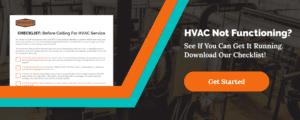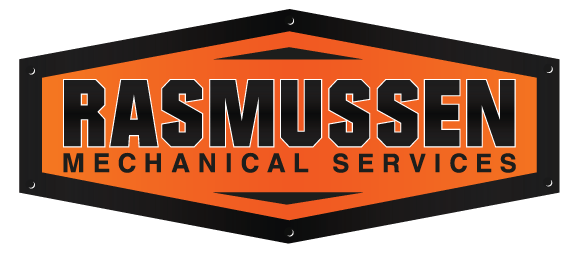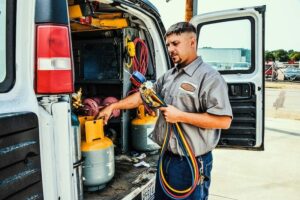Considering a commercial HVAC replacement? This guide covers when to replace your system, what it will cost, and the benefits of upgrading.
Commercial HVAC Replacement Warning Signs
When is the right time to replace your commercial HVAC system? Unusual noises coming from the system are one of the first signs. Sounds such as grinding, rattling, clunking, squealing, or hissing typically indicate problems. Neglecting these noises can result in costly repairs and potentially warrant a replacement.
Rising energy costs without changes in usage patterns could indicate a malfunctioning HVAC unit. A sudden spike in your energy bills could also be an indicator of short cycling. This inefficiency often means the system is working overtime, consuming more energy and driving up costs.
Inconsistent temperatures in different areas of your office can also signal something is wrong. Rooms being too hot or too cold may indicate your system’s inability to distribute air properly. Promptly addressing these minor issues ensures a comfortable and healthy work environment.
Why Upgrading to a New Commercial HVAC System Sometimes Makes Sense
Upgrading to a new commercial HVAC system offers many benefits including improved energy efficiency, better indoor air quality, and reduced maintenance costs.
Enhanced Energy Efficiency
Upgrading to high-efficiency HVAC equipment can cut a building’s heating-and-cooling energy use by
up to 50 percent versus systems installed a few decades ago, according to the U.S. Department of Energy. By pairing right-sized variable-air-volume air handlers or variable-refrigerant-flow heat-pump networks with a thorough zone-load analysis, facility teams eliminate the waste of constant-volume fans and simultaneous heating and cooling. Layer on a disciplined maintenance routine—regular filter swaps, coil cleaning, refrigerant-charge checks, and controls calibration—and you lock in those energy gains while delivering consistent comfort and reliability.
Improved Indoor Air Quality
While the core components of an HVAC system—fans, coils, and ductwork—haven’t changed radically, new commercial units support higher-grade filtration and smarter ventilation strategies right out of the box. Factory-supplied filter racks now accommodate MERV-13 (and sometimes MERV-14) media without excessive pressure drop, capturing a much larger share of fine dust, pollen, and even some airborne pathogens than the MERV-8 filters that were standard a decade ago. Today’s controls also make it easy to add demand-controlled ventilation (using CO₂ or occupancy sensors) and energy-recovery ventilators (ERV/HRV) that bring in more outdoor air without a big energy penalty—two of the most effective ways to dilute indoor contaminants. Supplemental air-cleaning technologies such as UV-C lamps or bipolar ionizers are typically field-installed add-ons, not baked into the equipment, but modern units are pre-wired and space-planned to accept them. The result is a system that can deliver cleaner, fresher air with less manual intervention and without the need for aftermarket retrofits just to hit current IAQ targets.
Reduced Maintenance Costs
Today’s commercial HVAC units are built to save you money on upkeep as much as they are to keep you comfortable. Variable-speed drives replace the old hard-starting motors that used to fry compressors, and whisper-quiet brushless EC fans run for years without chewing through bearings. Integrated controls watch temperatures, pressures, and vibration around the clock, flagging tiny hiccups before they balloon into pricey breakdowns. Corrosion-resistant coils, smarter oil circuits, and leak-tight refrigeration loops mean fewer emergency calls, while standardized service ports and onboard data logs let techs diagnose issues in minutes instead of hours. Put it all together and you spend a lot less on parts, labor, and unplanned downtime—delivering noticeably lower maintenance costs and rock-solid comfort for everyone inside.
Evaluating the Cost of Replacing Your Commercial HVAC System
System
Evaluating the costs of replacing your commercial HVAC system is crucial for making an informed decision. The primary cost drivers are system size and capacity, type of HVAC system, and labor costs, along with other factors. Each factor can impact the overall cost of your HVAC replacement.
System Size and Capacity
Cooling capacity in commercial HVAC is expressed in tons (one ton equals 12,000 BTU per hour). A quick rule of thumb is to allow one ton for roughly every 300 – 350 square feet of conditioned floor area. Matching the unit size to the building’s needs is essential for optimal performance, but rules of thumb should only be a first pass. The surest path to right-sizing is a formal load calculation. A qualified engineer models the envelope, internal gains, ventilation requirements, and local design weather to determine both sensible and latent peak loads for each zone. Equipment is then selected to meet that peak plus a modest safety margin—usually no more than ten percent. Correct sizing eliminates short-cycling and humidity swings, trims 15–25 percent off both capital cost and annual utilities, and gives occupants steady comfort. Routine commissioning and maintenance—clean coils, proper refrigerant charge, calibrated controls—preserve those gains and can add another 5–20 percent in energy savings over the equipment’s life.
Type of HVAC System
Commercial buildings commonly rely on: chilled-water plants, packaged rooftop units (RTUs), ducted split systems, ductless mini-splits, variable-refrigerant-flow (VRF) networks, and dedicated outdoor-air systems (DOAS). Each platform delivers cooling (and often heating) in a slightly different way, with its own footprint, efficiency profile, and maintenance demands.
So how do you decide which one fits your project? Start by ranking your priorities:
- Load profile and zoning needs. Large, diverse loads often favor chilled-water or heat-recovery VRF because they share capacity efficiently across many air handlers.
- Space constraints. Tight roofs or mechanical rooms push designers toward lightweight VRF condensers or split/mini-split options that require minimal ductwork.
- Simultaneous heating and cooling. Hotels, hospitals, and mixed-use offices benefit from heat-recovery VRF or four-pipe chilled/hot-water systems that can move heat from warm zones to cool ones.
- Budget and installation timeline. Packaged RTUs and traditional split systems come preassembled, install quickly, and carry lower up-front price tags—ideal when capital is tight or downtime must be minimal.
- Maintenance resources. Simpler RTUs and splits are serviceable by most HVAC contractors, whereas chilled-water plants and VRF networks demand technicians trained on specialty controls and compressors.
- Energy and ESG goals. Magnetic-bearing chillers, inverter-driven VRF, and DOAS paired with energy-recovery ventilators deliver top-tier part-load efficiency and easier paths to decarbonization targets.
- Indoor Air Quality (IAQ). If humidity control and fresh-air dilution are paramount—think schools or healthcare—DOAS equipment that conditions ventilation air separately can be a game-changer.
Once you know what matters most, perform a life-cycle cost analysis that blends capital expense, projected energy use, and maintenance over 15–20 years. Overlay structural, electrical, and architectural constraints, and the right choice usually becomes clear. By combining thorough load calculations with a disciplined decision process, you’ll land on an HVAC system that balances comfort, cost, and sustainability—without oversizing, underserving, or overspending.
Labor Costs
Labor is a significant portion of any total replacement. System complexity and building architecture influence labor costs, as more intricate setups require specialized knowledge and more time. Labor costs vary significantly based on job complexity and regional labor rates. Investing in skilled professionals ensures a smooth and successful installation, ultimately saving on future repairs and operational inefficiencies.
Maintaining Your New Commercial HVAC System
A new HVAC system will only stay “new” if you give it a structured preventive-maintenance routine. Don’t forget the basics: inspect filters every month and replace them at least quarterly so airflow stays within design limits. Clean condenser and evaporator coils twice a year. A thin layer of dirt can raise energy use by 5–10 %. Verify belt tension and alignment each quarter or switch to synchronous belts that never stretch. Once a year, have a technician hook up gauges to confirm refrigerant charge, calibrate sensors and dampers, and download the controller’s trend logs to spot hidden inefficiencies.
Fan efficiency work is where many buildings leave money on the table. If your supply or return fans still run at a constant speed, add a variable-frequency drive (VFD) and set the controls to track static-pressure reset or CO₂ levels—cutting fan energy by up to 40 %. At the same time, seal obvious duct leaks with mastic and rebalance airflows so every branch sees only the pressure it needs; less static pressure means lower horsepower. Finally, schedule a full tune-up each cooling and heating season to verify that economizers, dehumidification sequences, and safety limits operate as intended. These targeted tasks keep your system operating at peak efficiency, slash repair bills, and extend equipment life well beyond the warranty period.
Commercial HVAC Replacement Summary
In summary, here are the critical steps to ensure your business operates efficiently and comfortably with a commercial HVAC Replacement
- Recognize when to replace your commercial HVAC system by monitoring signs such as unusual noises, rising energy bills, and inconsistent temperatures.
- Evaluate replacement costs by considering system size, type, labor expenses, and additional materials.
- Understand the benefits of upgrading to a new system, including enhanced energy efficiency, improved indoor air quality, and reduced maintenance costs.
- Select the right commercial HVAC system based on your building’s specific heating and cooling needs, system complexity, and energy efficiency ratings.
- Ensure proper installation by hiring licensed professionals to guarantee optimal performance, compliance with building codes, and warranty protection.
- Maintain your new HVAC system regularly to prolong its lifespan, reduce repair costs, and sustain energy efficiency.
- Manage your HVAC system effectively to achieve significant long-term savings and create a healthier work environment.
Take proactive steps today to evaluate and upgrade your commercial HVAC system. Doing so will ensure a comfortable, efficient, and cost-effective environment for your business.
Frequently Asked Questions About Commercial HVAC Replacement
What are the signs that indicate it’s time to replace my HVAC system?
If you notice unusual noises, rising energy bills, inconsistent temperatures, or deteriorating air quality, it’s time to consider replacing your commercial HVAC system. Addressing these signs promptly can lead to improved efficiency and comfort.
How often should commercial HVAC units be replaced?
Most commercial HVAC systems last about 15-20 years, but plan a replacement sooner if energy use spikes, repairs pile up, or refrigerant rules change; well-maintained units can run longer, while hard-working equipment may need an earlier swap-out.
Which HVAC system is best for a commercial building?
The best HVAC system depends on your building’s size, zoning needs, load profile, and energy goals. Evaluate required heating-cooling capacity, desired temperature zones, existing ductwork, future expansion plans, and local efficiency codes, then select the configuration that meets those criteria at the lowest total lifecycle cost.
How can I estimate the cost of replacing my commercial HVAC system?
To accurately estimate the cost of replacing your commercial HVAC system, assess the system size, type, labor costs, and any additional materials required. This comprehensive approach will provide you with a clearer financial picture.
What are the benefits of upgrading to a new commercial HVAC system?
Upgrading to a new commercial HVAC system significantly improves energy efficiency and indoor air quality while lowering maintenance and repair costs. Investing in a new system can enhance overall operational performance and comfort in your space.
How do I choose the right commercial HVAC system for my building?
To choose the right commercial HVAC system, assess your building’s specific requirements, consider the system’s complexity, and evaluate energy efficiency ratings. This will ensure you select the best system tailored to your needs.
Why is proper installation important for my new HVAC system?
Proper installation is crucial for ensuring optimal performance and reliability of your new HVAC system, while also protecting your warranty and reducing the risk of expensive repairs. Professional installation ensures the HVAC system operates at peak efficiency, minimizing energy consumption and reducing costly repairs.




 System
System
